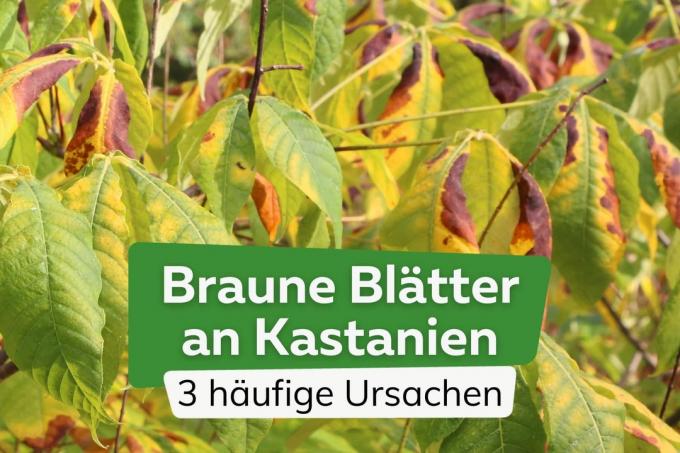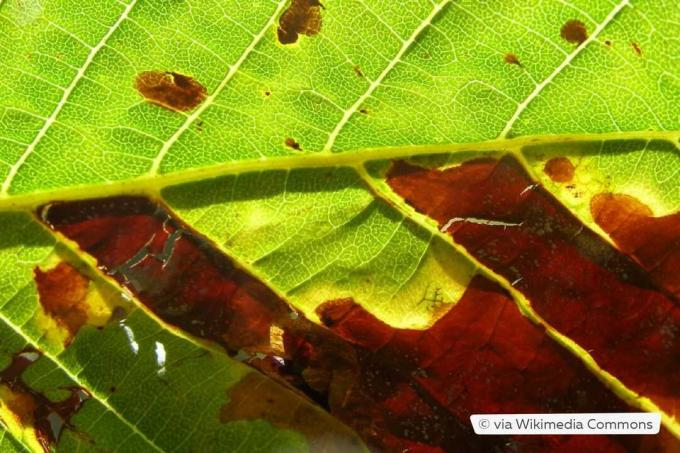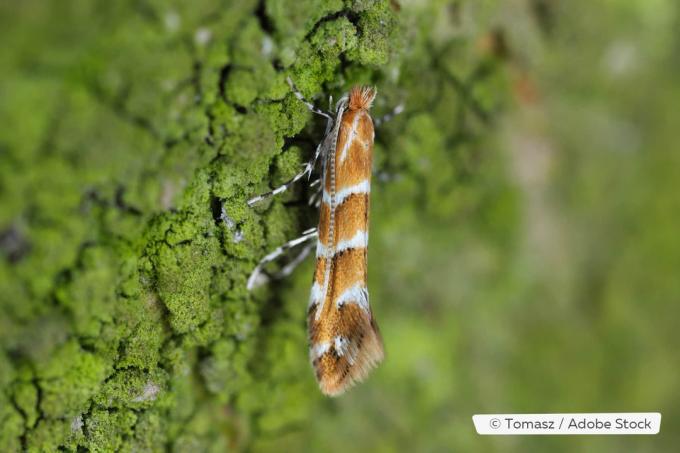
Chestnut trees are extremely popular with children, as their fruits are perfect for handicrafts and games. All the worse when the chestnut gets brown leaves. What can be the reason?
In a nutshell
- various causes of brown leaves on chestnuts
- too much sun harmful
- Climate change weakens horse chestnuts
- Fungal diseases (leaf tan) and pest infestation (miner moth) are the result
- Sweet chestnut particularly climate-resistant
Table of contents
- Causes of brown chestnut leaves
- leaf tan
- heat and drought
- leaf miner
- frequently asked Questions
Causes of brown chestnut leaves
Has her chestnut suddenly brown leaves, one of these causes is often behind it:
- leaf tan
- persistent heat and drought
- leaf miners
leaf tan

Leaf blight (Guignardia aesculi), a common fungal disease, often causes brown leaves on chestnuts. Especially if the spring was cold and wet, the mushroom finds good conditions. Both the red-flowering and the white-flowering variants of the horse chestnut (Aesculus hippocastanum) are affected.
characteristics
- dark brown spots with yellow border on leaves and stems
- partly delimitation of the spots by leaf veins
- later brown coloring of the entire leaf
- black spots on the underside of the leaves
- premature fall of leaves in summer
- Weakening of the trees with repeated attacks
help and prevention
- remove old foliage and dispose of safely
A notice: The affected leaves don't belong in the compost, but in the household waste. Fungal spores also develop on fallen leaves, which can infect chestnut trees again the following year.
heat and drought

The summers of recent years have been characterized by persistent heat and drought. Although chestnut trees are considered climate-stable, they are also affected. Brown leaves or premature shedding of the foliage are some of the effects that can be seen on chestnuts.
characteristics
- Leaves turn brown from the edge of the leaf
help and prevention
Chestnuts need water to develop well. However, it makes little sense to additionally water mature trees. Chestnuts have a long taproot and branched side roots that reach deep into the ground. Freshly planted chestnut trees, whose roots are not yet well developed, as well as bucket specimens need additional watering in dry summers. Make sure that the substrate does not dry out.
A notice: Although the deciduous trees like a sunny location, too much sun can quickly lead to sunburn on the leaves, especially in young specimens. So choose your planting location carefully.
leaf miner

If the chestnut gets brown leaves, the horse chestnut leaf miner (Cameraria ohridella) is often behind it. First discovered in Macedonia in 1984, it quickly spread across Europe. The larvae of the leaf miner eat the chestnut leaves. The damaged leaves turn brown and fall off. Due to the missing leaves, the photosynthesis disturbed and the tree is weakened. This also makes it more susceptible to other diseases and pests.
A notice: Three generations of chestnut leaf miners are formed each year. The first flies from April, the second from July and from September the third generation will be active. So check your chestnut regularly for pests. The sooner they are discovered, the greater the chances of saving the tree.
characteristics

- Larvae eat holes in chestnut leaves
- Leaves turn brown and fall off
- lower crown areas tan completely
- tree is weakened
help and prevention
- thorough removal of fallen foliage
- safe disposal in municipal composting facility
- do not compost in the garden
frequently asked Questions
The blue tit prefers to eat leaf miner larvae. Anyone who wants to support the bird and protect chestnuts at the same time should nest boxes hanging in the trees.
Through many years of observation, scientists have focused on a particularly climate-resistant chestnut species: the sweet chestnut (Castanea sativa). The variety loves warmth and develops well in dry locations. In addition, she spoils us with her tasty chestnuts.
Yes, but preferably only in processed form. For example, syrup and jelly can be prepared from the blossoms of the chestnuts. Chestnut blossoms also have a permanent place in naturopathy. They are processed into medicinal teas and tinctures. However, raw buds should only be enjoyed raw in small amounts.
The reason for the lack of fruit formation is usually that there is no suitable pollinator tree nearby. Chestnuts are separate sexes. In the case of sweet chestnuts, it should also be noted that they only bear fruit after a few years.
